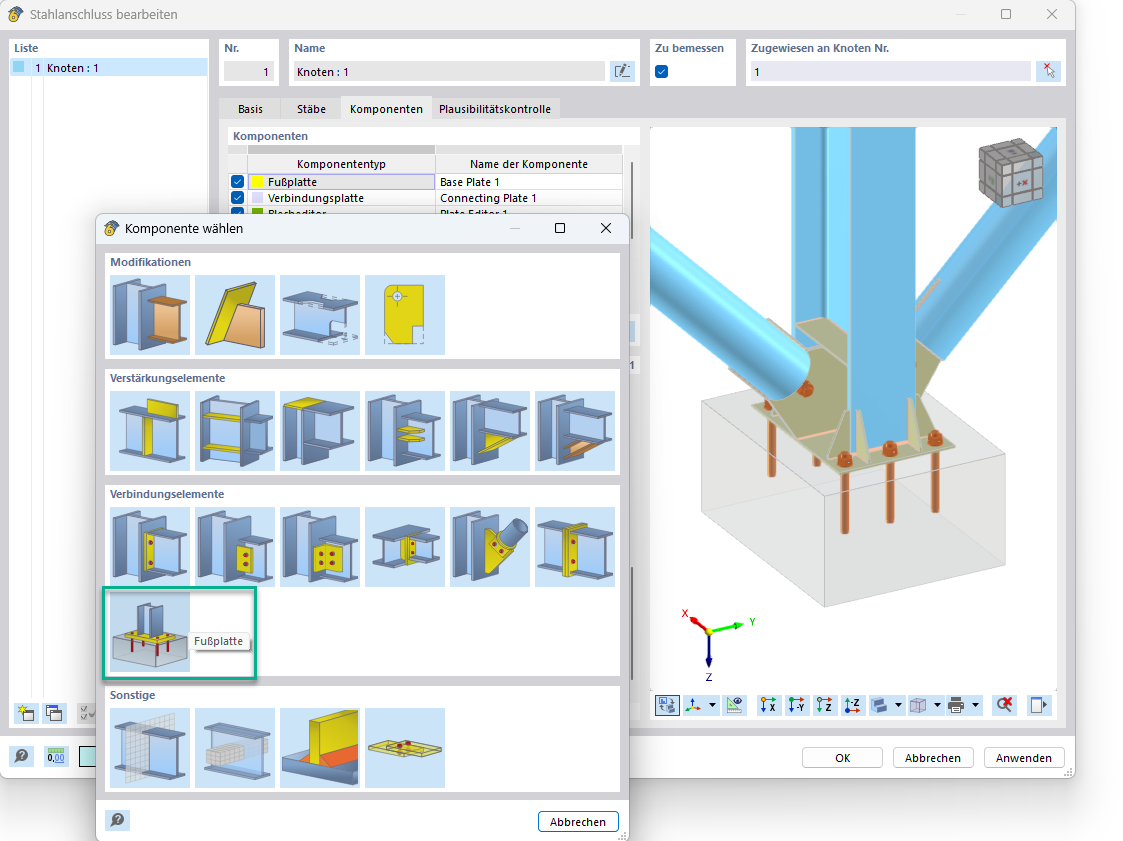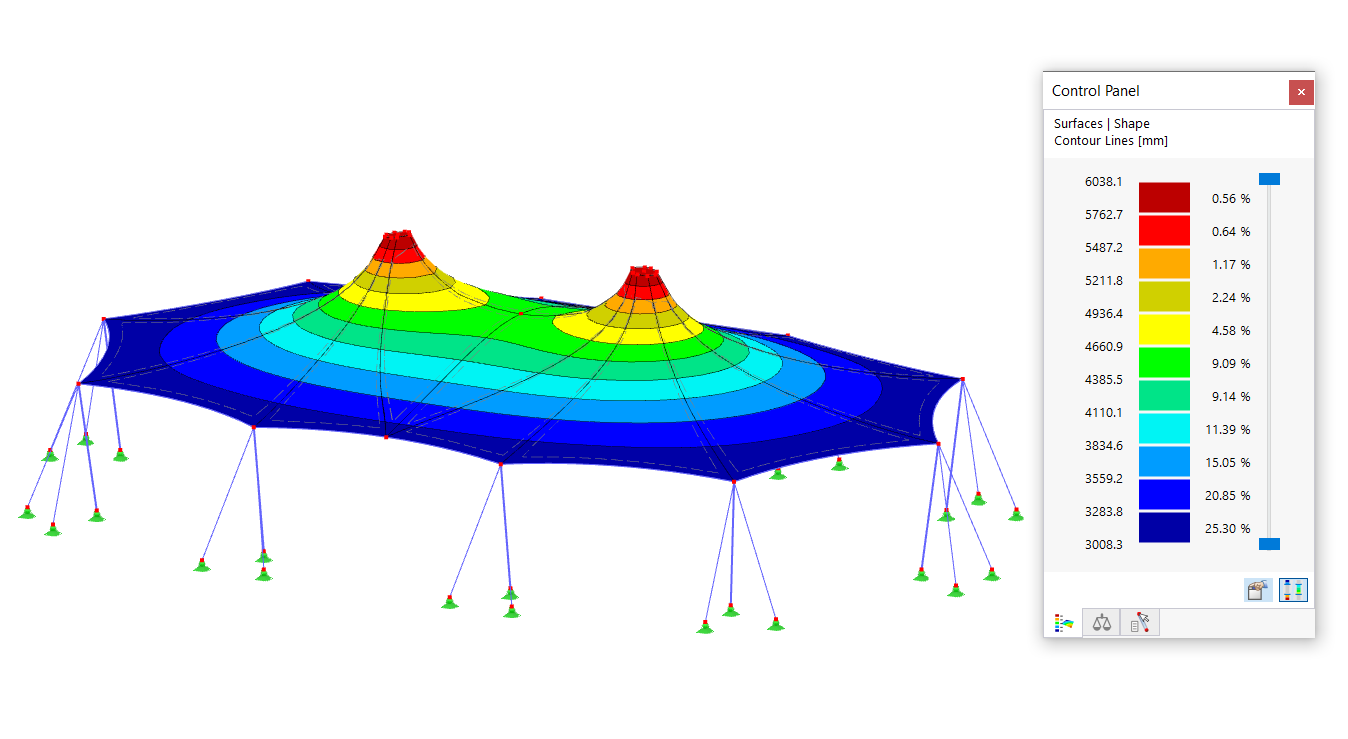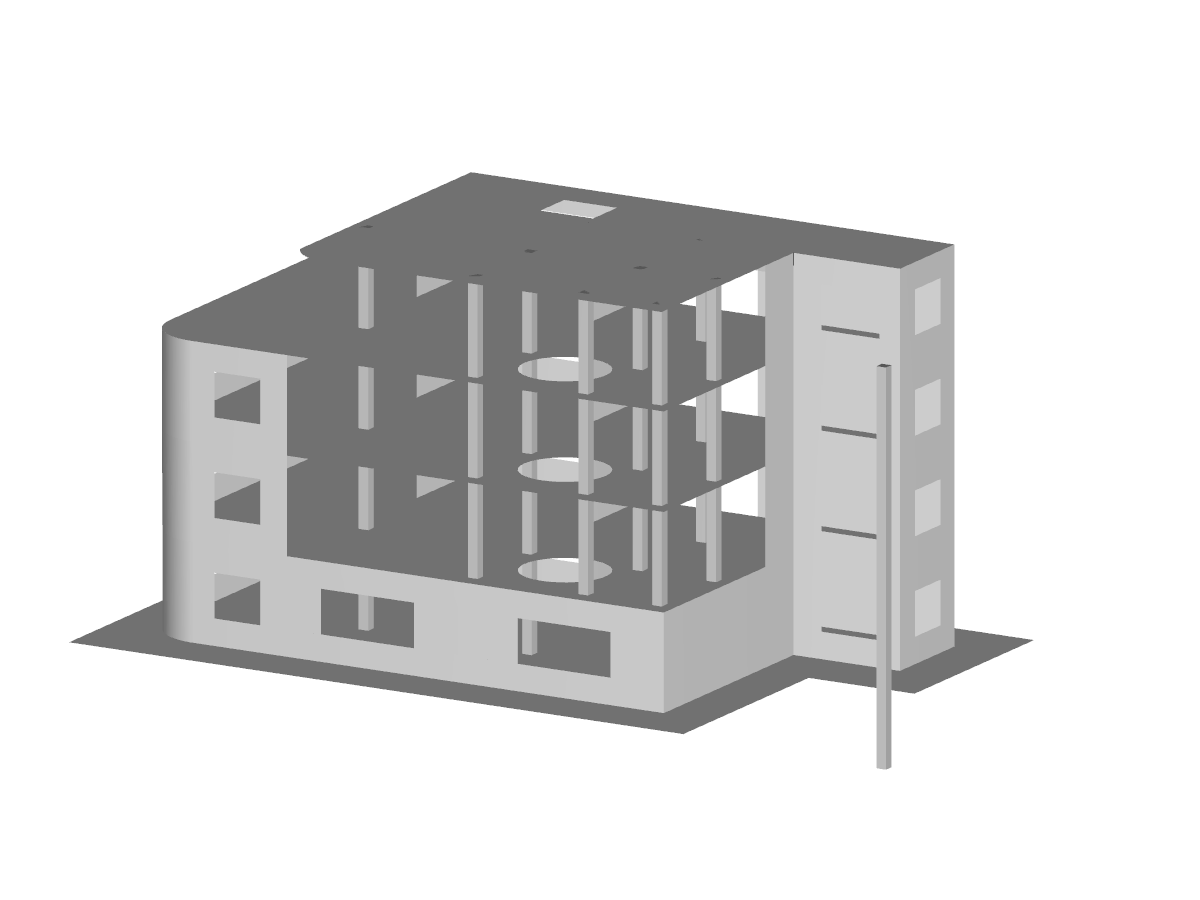Liniové svary lze zadat pomocí dialogu "Nový liniový svar", jak je znázorněno na obrázku 1. Pro zadání liniového svaru je důležitý výběr typu spoje. V programu je k dispozici několik typů: tupý, rohový, přeplátovaný a T-spoj. Je také potřeba zadat typ svaru. The list offers different options for performing weld design checks depending on the joint type.
Liniové svary lze vytvořit „spojitě“ po celé délce linie. Při zadání parametrů svaru je tedy třeba definovat „Velikost svaru“, která představuje tloušťku svaru, zatímco „Délka svaru“ vyplývá z délky linie. For asymmetrical weld configurations, the position of the weld seam can be defined in relation to the connected surface (red part in the dialogue graphic). If the "Surface Normal (+z)" option is selected, the weld seam is defined on the bottom of the connected surface, whereas the "Reverse Surface Normal (-z)" option allows a definition on the top without having to reverse the surface orientation.
A line welded joint can be assigned to a line that belongs to or is integrated into the subsequently selected surfaces. The line and surface numbers may be assigned in the upper right corner of the dialog box, or by graphical selection in the working window. Please note, that the order in which the surfaces are selected is not arbitrary. By definition, the first surface is always considered to be the "connected surface" and is used for determining the stress in the weld seam.
The orientation of the weld seam is defined by the following rules:
- w corresponds to the weld seam axis and is always identical to the x-axis of the line on which the line weld seam is defined.
- s is orientated parallel to the z-axis of the first surface from the line weld definition (simplified method) or is parallel to the effective weld throat (directional method).
- j is orientated orthogonally to the w-s plane.
The coordinate system of the weld seam can be activated/deactivated using the display navigator.
Po vytvoření a přiřazení liniových svarů lze zadat základní údaje pro posouzení liniových svarů. To lze provést v záložce Analýza napětí-přetvoření - konfigurace ve stejném dialogu (obrázek 4) nebo pomocí konfigurace v položkách Analýzy napětí-přetvoření v navigátoru (obrázek 5).
First, you can select the stress components relevant for your calculation. You can analyse normal stresses in the j-direction σj (corresponds to σ⊥ in EN 1993-1-8 [1]), as well as the transverse shear stresses τs (equal to τ⊥ in [1]) and longitudinal shear stresses τw (corresponds to τ‖ according to [1]) at the critical verification points of the weld seam (for more details, please refer to ). Various equivalent stresses are also available.
For stress components with defined limit stress, utilisation values are calculated in addition to the stress values. This means that stress verification checks in accordance with national codes, such as the EN 1993-1-8 [1], can be carried out with little effort.
V tomto dialogu jsou k dispozici také speciální možnosti. For instance, you can control the smoothing of the stresses (that is, the distribution of the local stress peaks over the weld seam length) and the stress analysis method. For weld configurations with fillet welds, the stresses can be determined with reference to the connected surface orientation (simplified method according to EN 1993-1-8 [1]) or the inclined effective weld throat (directional method according to [1]).
Weld eccentricities can be considered if relevant. This way, additional moments may occur, for example, in the case of one-sided fillet weld structures.
Po výpočtu se napětí v liniových svarech zobrazí v grafické i tabulkové podobě. V navigátoru lze nastavit, která napětí se v grafickém okně zobrazí, zatímco v tabulce lze zobrazit napětí po návrhových situacích, zatíženích, liniích a místech.
The result details provide additional intermediate results such as the opening angle between the connected surfaces, the inclination angle of the effective weld throat or line weld forces per unit length M, W, V and P that provide the basis for stress calculation.




















..png?mw=320&hash=bd2e7071b02d74aef6228d22c4b83867d2d7e1a5)








.png?mw=350&hash=cb608b662a8dcf0f0bc5c92793c5cbbca1755d74)



































_1.jpg?mw=350&hash=ab2086621f4e50c8c8fb8f3c211a22bc246e0552)






.png?mw=600&hash=49b6a289915d28aa461360f7308b092631b1446e)

















